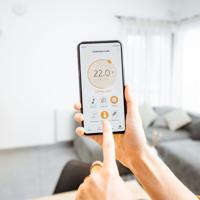Welcome to Tech Living's take on utilizing IFTTT to enhance your home automation experience. If you've been dabbling in smart home technology, you've probably heard the term IFTTT (If This Then That). This intriguing platform can help you get more from your smart devices by creating personalized automation that suits your lifestyle.
In this guide, we'll journey together through the IFTTT setup for home automation. We’ll keep it simple and friendly, aiming to provide practical information that you can apply right away.
What is IFTTT?
IFTTT, an abbreviation for "If This Then That," is an online service that enables different apps and devices to work together. Imagine setting your smartphone to automatically tweet the temperature once your smart thermostat detects a certain threshold, or to turn your smart lights blue when there's a weather alert. IFTTT makes all this possible by creating "applets"—simple conditional statements that connect services.
Why Use IFTTT for Home Automation?
In our smart homes, each device often has its own app and ecosystem. IFTTT acts like a bridge, connecting these disparate systems without needing extensive technical skills or coding knowledge. This can be particularly useful if your devices come from different manufacturers, which is often the case.
With IFTTT, you can create interactions between a vast array of popular platforms and devices with relative ease. From simplifying daily routines to adding layers of automation, it has many practical applications for home automation enthusiasts.
Getting Started with IFTTT
Here’s a step-by-step guide to setting up IFTTT for your home automation needs:
1. Create an IFTTT Account
Head over to IFTTT's website and sign up for an account. You can also download the IFTTT app on your mobile device for easier access to your applets on the go.
2. Connect Your Services
Once signed in, you'll want to start connecting the services you use. IFTTT supports myriad services like Philips Hue, Google Assistant, Amazon Alexa, and hundreds more. For more information on connecting services, see Apps to Integrate and Connect Services.
- Navigate to the 'Discover' tab on the IFTTT dashboard.
- Search for the specific services or devices you wish to connect.
- Authorize these services to connect with your IFTTT account.
3. Create Your First Applet
Now, let’s create an applet:
- Go to Create at the top right corner.
- Select a trigger. This is the "If This" part of the applet. For example, you might choose "Google Calendar" if you want an action to occur based on a calendar event.
- Define the trigger. If using a calendar, you could opt for "Any event starts."
- Choose an action service for the "Then That" part, such as turning on Philips Hue lights.
- Define the action—e.g., “Turn on the living room lights.” For more ideas, check out our guide on Best Voice Commands for Smart Homes.
4. Explore & Customize Applets
There are also many pre-made applets available. You may find them by browsing the 'Explore' section or by searching specific services. Here are a couple of examples:
Weather Alerts: When the forecast calls for rain, IFTTT can prompt your smart home hub to close smart blinds or notify you to bring an umbrella.
Security Checks: Set your smart door lock to engage when you verbally say "Goodnight" to your smart speaker.
Depending on your needs and creativity, the possibilities are numerous.
Best Practices
Keep it Simple
Start with modest applets that serve immediate functional purposes. Sometimes less complex applets can be more effective than intricate workflows.
Monitor and Adjust
Home automation Home Automation is dynamic. Regularly review which applets add value and adjust accordingly. It's okay to discontinue those that feel unnecessary.
Explore Community Creations
The IFTTT community continuously creates and shares new applets. These can serve as inspiration or direct applications to enhance your setup.
Conclusion
Whether you’re a tech-savvy individual or just starting your smart home journey, IFTTT offers a friendly doorway into creating deeper integrations among your smart devices. While it requires some experimentation and tweaking, the outcome often results in a smoother and more personalized smart home experience.
We hope this guide provides a helpful introduction to setting up IFTTT for home automation. Feel free to share your experiences or tips in the comments section. Remember, exploring technology is a journey, and each small step forward brings us closer to the smart lifestyle we envision.



